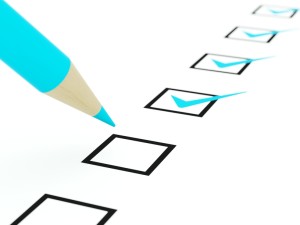
While we may never know why some Youtube videos go viral and others don’t, it’s easy to tell why some emails succeed and others get sent straight to the trash folder.
Great emails – the kind that get opened, clicked, shared and saved to read again – always contain these 5 crucial elements. Do yours?
5. A subject line that stands out
It’s tempting to write subject lines that simply reveal what’s inside your email. For example, if your email contains your monthly newsletter, you might write “September Newsletter” as the email subject line.
The problem with this technique is there is no incentive to open the email – the reader already knows exactly what to expect, and their curiosity isn’t peaked.
Your subject line must engage the reader and encourage them to open your email now, not later.
Ask a question, share an interesting statistic, and use words like “this” and “that” to create curiosity (“This is the #1 way to grow your email list”).
Curiosity leads to a sense of urgency, which in turn gets your email opened faster!
4. A headline that resonates
Did you know that emails need eye-catching headlines, just as blog posts do?
Begin your email with a headline that follows all of the marketing best practices you use on your website and blog.
A great headline…
- Makes you want to keep reading
- Peaks your interest or curiosity
- Creates a question in your mind that you need answered now
- Promises something exciting/interesting/informative to come
A strong email headline might look something like this:
“Hi Amy,
I’ve decided to stop blogging.”
‘Whoa!’ thinks Amy, immediately engaged and curious. ‘Why would they stop blogging? What happened?’
This particular email could then go on to talk about a new Youtube channel, or the benefits of podcasting over blogging.
3. A solution to a problem
A great email always contains a solution to a problem your reader is currently having.
The solution could be in the form of an answer, a new product, a blog post, a photograph, or a valuable piece of information.
If you get 37 emails per day from clients complaining that they have no free time, an email focused on time management will be the answer to their prayers.
How can you use your next email to solve your customer’s biggest problem?
2. A strong call to action
You email your list a monthly newsletter, sharing the latest and greatest from your product line, or introducing a new team member to your tribe.
And then….?
Without a strong, specific call to action, emails that follow all of the above-mentioned steps still fall flat.
What action do you want the reader to take after they’ve opened your email and read your content?
Whether it’s clicking a link, downloading a report, buying a product or entering a contest, great emails always name the call to action (i.e. “click here to read more”) and explicitly ask the reader to engage right now.
1. The delivery of a promise
Great emails not only promise to make readers’ lives better; they actually deliver on that promise.
After naming a problem and inviting the reader to solve that problem with your product, you’ve demonstrated your trustworthiness as a business owner.
Your call to action promises to make problems disappear, so make sure you keep your word with every email you send.

Craig Joppich says
Thanks Sydni, simple and focussed tips.
Dennis Dilday, D.C. says
It’s hard to resist reading an article by you because they are all so good:-)
Your #4. example though reminds me of an irritating trend: people who title their Post with one thing, then talk about something all together different (now that they have your attention). I know you aren’t recommending that, but it is a transparent attempt to control others, and it leaves a very bad taste.
You, on the other hand, do a great job. And you are a pleasure to read. Thanks!
Kim Harris says
Hi Sydni,
Nice reading your article. I will keep these tips in mind from now on.